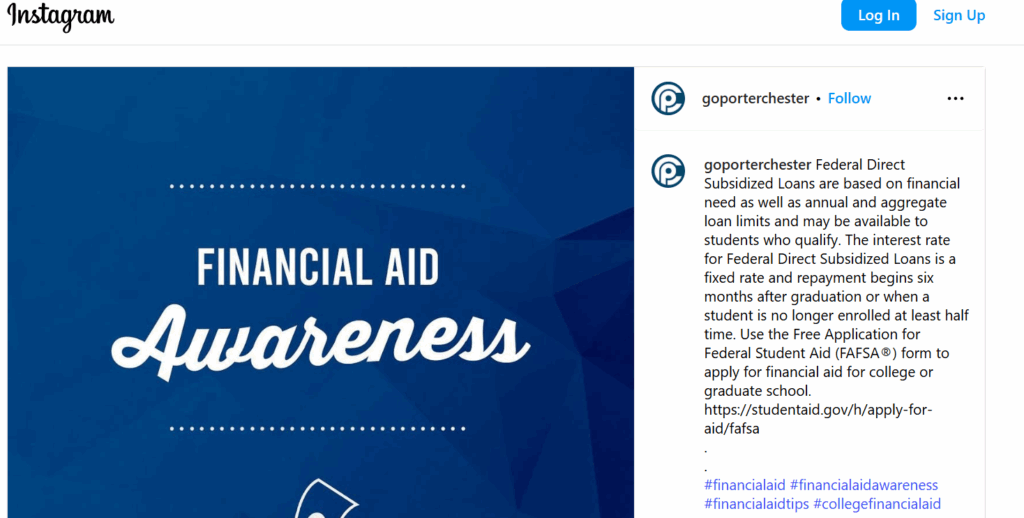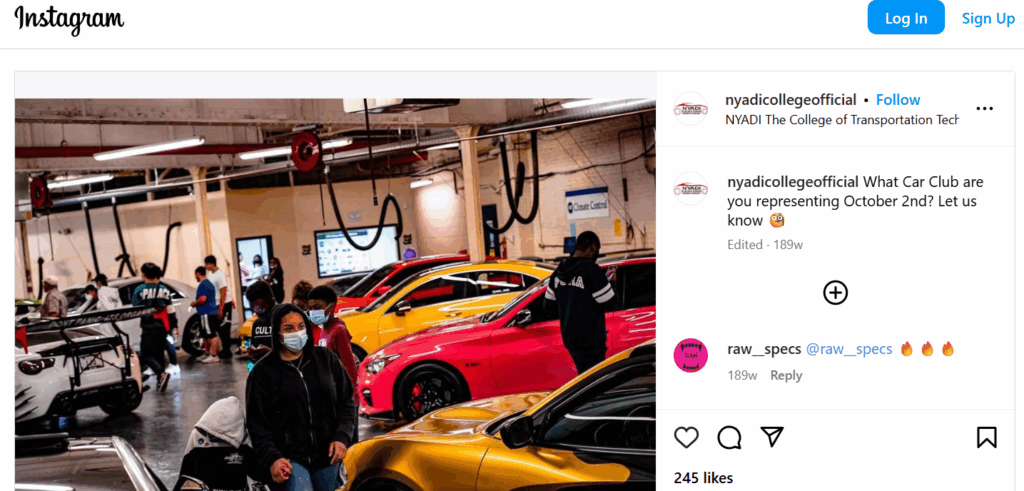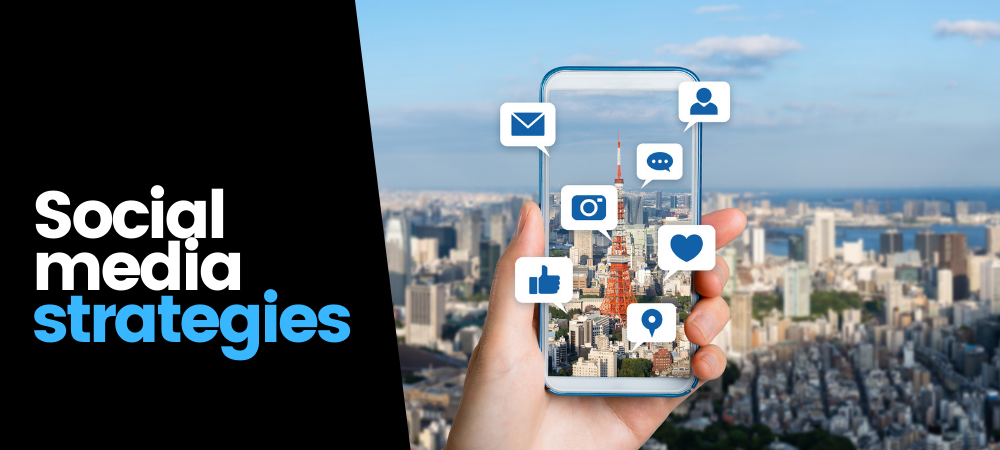Starting in 2026, colleges across the U.S. will face the ‘enrollment cliff’ – a sharp decline in the number of college-bound students. With fewer prospects to go around, competition for enrollment will grow fiercer, making every student interaction increasingly important.
Social media’s role in recruitment is on an upward trajectory. Recent surveys reveal that 78% of consumers say a brand’s social media presence influences their trust in that brand more than it did a year ago. For Gen Z, this figure jumps to 88%, underscoring the critical role social media plays in connecting with prospective students. This makes it important for you to think about social media strategies for higher education.
Building Trust and Showcasing Value Through Social Media
Universities and colleges that maintain a consistent, audience-focused social media presence are strategically positioned to build trust and demonstrate their unique value. This, in turn, enhances their ability to attract more students in a highly competitive environment.
Being active on social media is essential for building brand awareness and cultivating meaningful relationships with prospective and enrolled students, as well as other key stakeholder groups, such as alums and donors.
A robust social media strategy is not just beneficial—it’s vital for institutions aiming to stand out and succeed in recruitment efforts. But it can be hard to know where to start.
If you’re in the process of setting up your college’s social media accounts or if you’re working on a higher education social media strategy for 2026, you’ve come to the right place. Let’s look at strategies along with certain examples from colleges. Think about what makes their content so effective and how you might be able to adapt some of their approaches for your own social media campaigns.
Social Media Strategies for Sucess
1. Link social media marketing goals to the institution’s vision
To truly connect marketing objectives with an institute’s or university’s overarching vision, social media strategies must do more than just chase after engagement. They should echo the institution’s long-term goals.
Here’s how to weave these together seamlessly:
- Align with Institutional Goals: Social media efforts need to directly reflect and support the university’s strategic vision. Think of it as an extension that enhances the school’s image while broadening its influence.
- Use Measurable Metrics: Identify key performance indicators that reflect the success of your social media campaigns. Determine which metrics will give you insights into your impact and confirm alignment with institutional goals.
- Integrated Planning: Develop a cohesive marketing plan that dovetails with the university’s strategic direction. This ensures that each social media post serves a greater purpose.
By adhering to these principles, you can ensure that your social media presence is not just active, but actively contributing to the institution or university’s mission and vision.
2. Create network-specific strategies
In the realm of higher education, crafting network-specific social media strategies is crucial for reaching diverse audience groups effectively. While current and prospective students might be the primary audience, focusing solely on them overlooks other vital segments like parents and alums.
Each social media platform attracts distinct demographics, so you need tailored content approaches. For instance, TikTok is popular among younger users, requiring vibrant and engaging content. In contrast, Facebook tends to cater to parents and families, who may prefer more detailed and informative posts.
By understanding these audience preferences, educators can deliver personalized experiences, ensuring every piece of content resonates with varied stakeholders. This strategic approach maximizes engagement across channels, thereby enhancing the overall impact of their communications.
3. Focus on outcomes
Students who enroll in vocational training programs tend to be outcome-driven. In other words, they’ll want to know how studying at your college will help them further their career.
In the post below, you can see that Heavy Equipment Colleges of America incentivizes prospective students to apply by outlining, in very simple terms, what they can expect to achieve.
It also links to a webpage that includes further information on the course and an inquiry form.

4. Factor-in finance
According to a Gallup and Lumina Foundation report, 85% of surveyed individuals who either dropped out of or never enrolled in a higher education program cited the cost of the degree or credential program as a major reason for their current lack of enrollment. Additionally, 77% of these adults stated that one of the main reasons they weren’t enrolled in a program at the time was their need to work.
You can help set prospective students’ minds at ease by being transparent about fees and financial aid options, and sharing helpful resources on social media, like Porter and Chester Institute does in the following Instagram post. Finance might not be the most exciting topic, but it ranks incredibly highly on students’ agendas.

5. Share behind-the-scenes content
Stakeholders — including your students — are interested to know what goes on behind the scenes at your college. For instance, HCH Aviation’s Facebook page is well worth looking at. Alongside behind-the-scenes photos of its upcoming location, it regularly shares student success and graduation stories (see number 9 for another example of this approach in a higher education context).

6. Ask a (specific) question
If you’re going to ask your followers a question on social media, you could try making it specific like the Automotive and Diesel Institute has done in the example below. You’re more likely to elicit a response this way because it requires less effort on the part of the audience.

You may also want to think about why you’re asking the question. Are you going to use the responses as research to inform, for example, the content of a webinar or an in-person event? Or is your intention to build up a sense of anticipation?
Here are some other types of questions you could pose:
- Polls and surveys
- Reactions to something new at your college
- Opinions on a topic or idea
- What someone’s favorite _______ is
- Choosing between two images/concepts
- Ideas for improving a service, program, or resource at your college
7. Show people around
In the Instagram post below, University of Michigan inadvertently shows its followers around by sharing a day in the life of one of its enrolled students. This is student-focused content aligning with popular Instagram and TikTok trends. Could your institution do something similar?

Using your social platforms to help orientate people is always a good idea, particularly at a time when more interviews are taking place online and students might not even set foot on your campus until they’ve started their studies. It’s beneficial for international students too.
8. Use campus partnerships
As colleges expand their social media footprints, involvement from various campus departments becomes crucial. Colleges can enrich their online content and reach broader audiences by collaborating with different programs, such as libraries, dining services, and academic departments.
Here’s how partnerships play a pivotal role:
- Diverse Content Creation: When multiple departments contribute, the social media content becomes diverse and appealing to various interest groups. For instance, academic programs might share research highlights, while dining services might post about upcoming meal specials.
- Cross-Promotion Opportunities: Partnering allows mutual promotion of events and initiatives, extending their reach. When a library hosts a workshop, other departments can amplify the message via their channels, increasing overall engagement.
- Resource Sharing and Expertise: With a collaborative network, departments can share insights and resources. Educational sessions on social media strategies help these partners better represent the college’s brand online, enhancing the quality of content across platforms.
- Enhanced Student Engagement: Involving various departments fosters a more connected campus community. Students see a comprehensive view of campus life, from academic achievements to extracurricular activities, making them feel more engaged and informed.
These strategic partnerships not only strengthen a college’s online presence but also create a united and vibrant virtual community. By working together, colleges can effectively harness the power of social media to showcase their dynamic environment.
9. Share graduate stories
In this inspiring YouTube video, Angelica “Jelly” Weimer, a 2021 graduate from The Modern College of Design, explains how she saw an opportunity to solve a problem within the mental health community by developing a concept for a new app.
The video forms part of the college’s #PowerOfDesign campaign.
95% of marketers now consider video to be a crucial component of their overall strategy. And you should too!
Want to know how? Here’s a helpful guide for you: 7 Great Ideas For Your Higher Education Video Marketing + More Tips
10. Promote your events

11. Share fun and educational content
Social media also lends itself to games and trivia. As part of its “Microscope Monday” series, American College of Healthcare Sciences shares an image of… actually, we’ve got no idea what it could be… do you?

Gamification helps knowledge retention and drives engagement by providing incentives for people to pay attention – even if the incentive is something as simple as the adrenaline and dopamine rush of getting the answer right.
12. Show gratitude
Finally, how about showing gratitude? A simple thank you can go a long way.
Ideas for people you could thank include graduates, alums, donors, teachers, newly enrolled students, caterers, cleaners, technicians, your admissions team… the list goes on!
Tools: Why and How to Use Them in Your Social Media Strategy
1. Social Listening
Social listening is a pivotal component of any college’s approach to social media management. At its core, it ensures that all communication and engagement efforts are genuinely audience-centric. Through advanced listening tools, colleges can strategically time their campaigns, monitor positive (and negative) mentions, and benchmark their performance against industry standards.
- Effective crisis management – In instances of unfolding issues, whether on a local or global scale, social listening becomes an essential tool for crisis management. Colleges use it to gauge the ongoing discourse, helping determine whether to pause scheduled posts or craft specific messaging that responds to the situation. By providing a comprehensive overview of ongoing conversations, these tools offer valuable sentiment analysis, allowing institutions to grasp the audience’s opinions more clearly.
- Informed Decision-making – Sometimes, an issue might appear more significant than it actually is, simply because campus communications teams are deeply immersed in daily interactions. Social listening data helps clarify the true scope and impact of discussions, guiding whether action needs to be taken or if normal operations can continue. This realistic perspective is invaluable for making informed decisions on how to approach and prioritize social media activities.
Tools you can use:
- Brandwatch – Tracks and analyzes online conversations to gauge sentiment and trends in higher ed.
- Sprout Social – Monitors mentions and hashtags, helping universities stay on top of student and alumni engagement.
- Hootsuite – Offers deep listening capabilities to understand public perception of your institution.
- Meltwater – Provides comprehensive media monitoring for reputation management and influencer tracking.
2. Analytics
Colleges looking to enhance their social media strategies should turn to analytics tools that offer insights into audience behavior and campaign performance. These tools are crucial in crafting an audience-focused approach.
Key Applications of Analytics Tools:
- Campaign Timing: By evaluating data on when discussions are most active, colleges can optimize the scheduling of their posts. This ensures maximum reach and engagement, aligning posts with peak activity periods.
- Performance Measurement: Analytics tools allow colleges to track how often they receive positive mentions in digital forums. Comparing these metrics against industry standards provides a benchmark to assess and improve strategies.
- Crisis Management: As we discussed, when events unfold — whether on a local, national, or global scale — it’s important to analyze conversations quickly. Analytics tools offer valuable sentiment analysis, helping determine if scheduled posts should be paused or if new content needs to be crafted to address current issues.
- Conversation Scope: By examining the broader discussion and sentiment data, colleges can gain a realistic perspective on an issue’s actual reach and resonance. This prevents overreacting to what may seem urgent but is actually limited in impact.
By leveraging analytics tools, colleges can not only maintain but enhance an audience-centric social media strategy. These tools allow institutions to respond proactively and appropriately, ensuring their messaging remains relevant and impactful.
Tools you can use:
- LeadSquared – Offers insights on campaign performance, user behavior on university websites and campaign landing pages, etc.
- Google Analytics – Tracks traffic and user behavior on websites and landing pages.
- Socialbakers (now part of Emplifi) – Provides AI-driven social media analytics to measure and optimize engagement.
- Sprinklr – Unified platform with detailed social analytics, especially useful for multi-campus institutions.
3. Customer Relationship Management (CRM)
“If you can’t measure it, you can’t improve it.”
– Peter Drucker
Keeping track of how people engage with your social media posts can help you reflect on what works well and what doesn’t.
A higher education CRM will enable you to capture student inquiries from all your lead generation channels. It will show you the best lead sources too. You can use it to track people’s activities on everything from TikTok to LinkedIn, your website, and more. Curate your content accordingly.
In Conclusion
By integrating these strategies with a deep understanding of your audience and leveraging real-time data insights, institutions can go beyond just reaching students—they can foster vibrant online communities where engagement, trust, and advocacy naturally flourish. Personalization, consistency, and responsiveness across platforms are key to building long-term relationships with both prospective and current students.
Beyond simply contacting students, universities may create thriving online communities where engagement, trust, and advocacy naturally thrive by combining these tactics with a thorough understanding of their audience and utilizing real-time data insights. Long-term relationships with both current and potential students depend on responsiveness, consistency, and personalization across platforms.
As a powerful CRM and marketing automation platform, LeadSquared helps higher education institutions track student behavior, segment audiences, and deliver personalized messaging across multiple touchpoints — including social media.
Social Media Marketing Strategies for Higher Education Frequently Asked Questions
1. What are the most effective social media platforms for higher education marketing?
Platforms like Instagram, LinkedIn, YouTube, and TikTok are especially effective for reaching prospective students, while Facebook remains valuable for engaging parents and alums.
2. How can universities measure the success of their social media strategies?
Key metrics include engagement rate, follower growth, click-through rates, and conversion rates. Tools like LeadSquared help track lead attribution and campaign performance.
3. What kind of content performs best for higher education audiences?
Authentic student stories, campus life videos, faculty spotlights, and interactive content like polls or Q&As tend to drive the most engagement and trust.
4. How often should universities post on social media?
Consistency is more important than frequency. Posting 3–5 times per week with high-quality, relevant content is a good benchmark for most platforms.
5. Can automation tools help with social media marketing in higher ed?
Yes. Platforms like LeadSquared can automate messaging, segment audiences, and integrate with social media channels to streamline lead nurturing and engagement workflows.








